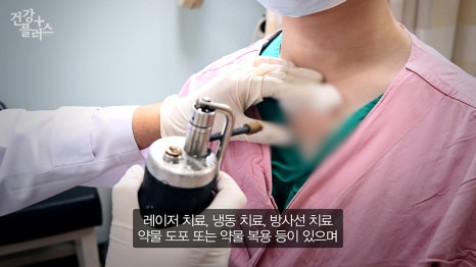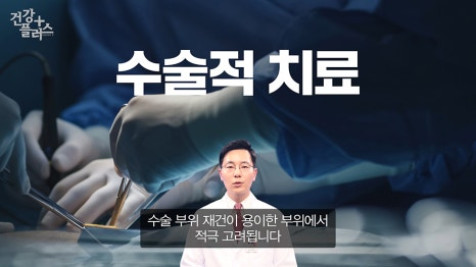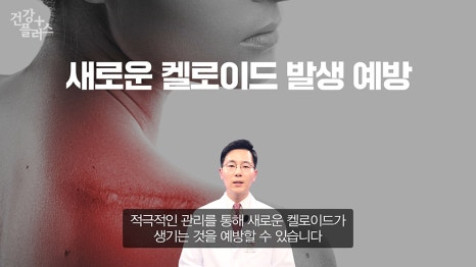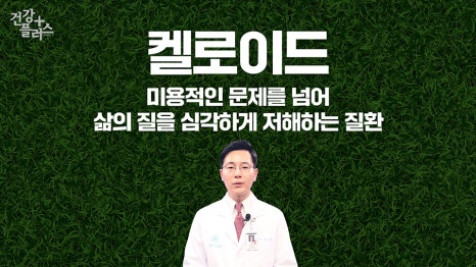Keloids: Understanding the Pain Beyond the Scar

The Great Pain Left by a Small Wound: What is a Keloid?
Hello, I am Professor Moon Ik-jun from the Department of Dermatology at Asan Medical Center in Seoul. The skin, as an organ, plays a crucial role in protecting our body from the external environment. However, it is susceptible to injury from surgery or trauma, resulting in scars of varying sizes during the healing process.
Unlike typical scars, you may have heard of keloids, where the scar tissue continues to grow and causes extreme symptoms. Today, we will delve into keloids, which cause pain beyond just a scar.
What is a Keloid?
A keloid refers to scar tissue that excessively proliferates beyond the original wound area. While most scars remain within the boundaries of the initial injury, keloids can develop from even minor wounds and gradually expand over time, far exceeding the original wound size. Therefore, it can be described as a scar exhibiting tumor-like characteristics.
Most keloid patients who visit the hospital for treatment develop keloid scars that are many times larger than the initial wound, often after experiencing minor injuries such as vaccinations or ear piercings. Sometimes, keloids can occur even without a specific injury, developing after skin conditions like acne or folliculitis. In addition to their size, keloids differ from other scars by causing symptoms like pain and itching, significantly impairing the quality of life.
Distinguishing Between Hypertrophic Scars and Keloids
A hypertrophic scar may look similar to a keloid. Hypertrophic scars also appear as raised, reddish scar tissue, making them resemble keloids. However, compared to the size of the original wound or skin lesion, hypertrophic scars do not extend beyond the wound's boundaries, while keloids tend to expand beyond the original wound area. Therefore, reviewing the size of the original wound through medical history is helpful in distinguishing between these two types of scars.
However, because hypertrophic scars and keloids are simply artificial classifications within the spectrum of scarring, it can be challenging to definitively determine where a hypertrophic scar ends and a keloid begins. Especially in the early stages of keloid development, the scar tissue may not be large, making it difficult to differentiate from hypertrophic scars.
Fortunately, the treatments for hypertrophic scars and keloids are generally similar. If it is difficult to determine whether a scar is a hypertrophic scar or a keloid, treatments common to both conditions are administered. Hypertrophic scars typically respond better to treatment than keloids and rarely recur after treatment is discontinued. The final diagnosis can be reached by observing the progress of treatment.
Keloid Treatment Methods
Keloids are considered a difficult-to-treat, chronic condition. Various treatments are attempted, which can be divided into surgical and non-surgical methods. Non-surgical treatments include intralesional injections, laser therapy, cryotherapy, radiation therapy, topical or oral medications, and combination therapy, which involves using two or more of these methods together, is generally recommended.
The most common treatment is intralesional injection, which involves injecting steroids or anticancer drugs directly into the keloid. While effective, it can be painful. Laser therapy and cryotherapy are less painful but require multiple sessions to see results. Oral and topical medications can relieve pain or itching caused by keloids, but they are unlikely to provide cosmetic improvement on their own.
Surgery involves physically removing the keloid tissue and is actively considered for small keloids in areas where reconstruction is easy. However, surgery itself involves creating a wound on the skin, leading to frequent recurrence. Therefore, non-surgical treatments are usually tried first, and surgery is considered if the response to non-surgical treatment is poor. Keloids often recur even after surgery. However, surgery is considered if non-surgical treatments have been tried for a long time without satisfactory results.
The recurrence rate after surgery varies depending on the location of the keloid. Keloids on the ear have a relatively low recurrence rate, but keloids on the jaw, chest, or shoulder tend to recur in up to 70% of cases. Therefore, surgery is actively considered if the location and size of the keloid suggest a relatively low recurrence rate. Otherwise, non-surgical treatments are continued for a longer period.
If surgery is decided upon, minimizing the possibility of recurrence is a crucial goal. While precise surgical techniques are important, radiation therapy or medication after surgery can lower the recurrence rate of keloids. Postoperative radiation therapy is known to be the most effective treatment for reducing keloid recurrence. Therefore, radiation therapy is actively considered unless there are contraindications. We strive to lower keloid recurrence and increase the safety of radiation therapy through collaboration with the Department of Radiation Oncology.
Keloid Prevention Methods
If a patient with a history of keloids experiences a skin injury due to surgery or trauma, active management can prevent the formation of new keloids. It is important to use moist wound dressings to prevent infection and protect the wound area. Medications to help prevent keloids may also be prescribed.
Being careful in daily life to avoid excessive skin tension or friction on the wound area, as well as using scar ointments or scar prevention tapes, are also good ways to prevent keloids. In the case of keloids caused by acne, actively treating new acne can effectively prevent the formation of keloid seeds.
Keloids are a disease that seriously impairs the quality of life beyond cosmetic problems, and active treatment is necessary. It is commonly believed that keloids cannot be treated, but it is possible to improve the symptoms of keloids and achieve cosmetic improvement. Keloid treatment takes a long time, unlike general scars, so patients sometimes give up treatment midway. However, by establishing a long-term treatment plan with the medical staff and following it, you can break free from the pain caused by keloids.
- Professor Moon Ik-jun, Department of Dermatology, Asan Medical Center -


















Source :https://blog.naver.com/amc_seoul/223992077119
No comments yet.
